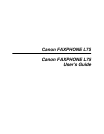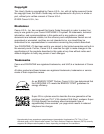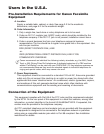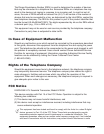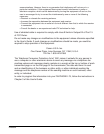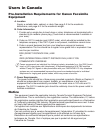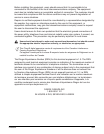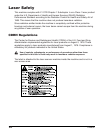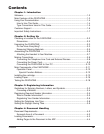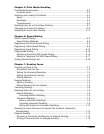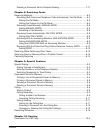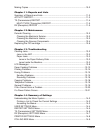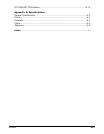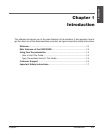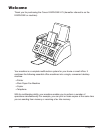
ii Preface
Copyright
This User’s Guide is copyrighted by Canon U.S.A., Inc. with all rights reserved. Under
the copyright laws, this User’s Guide may not be reproduced in any form, in whole or
part, without prior written consent of Canon U.S.A.
© 2002 Canon U.S.A., Inc.
Disclaimer
Canon U.S.A., Inc. has reviewed this User’s Guide thoroughly in order to make it an
easy to use guide for your Canon FAXPHONE L75 system. All statements, technical
information, and recommendations in this guide and in any guides or related
documents are believed reliable, but the accuracy and completeness thereof are not
guaranteed or warranted, and they are not intended to be, nor should they be
understood to be, representations or warranties concerning the products described.
Your FAXPHONE L75 has been sold to you subject to the limited warranties set forth in
the warranty cards. Further, Canon U.S.A. reserves the right to make changes in the
specifications of the products described in this guide at any time without notice and
without obligation to notify any person of such changes.
Trademarks
Canon and FAXPHONE are registered trademarks, and UHQ is a trademark of Canon
Inc.
All other product and brand names are registered trademarks, trademarks or service
marks of their respective owners.
As an ENERGY STAR
®
Partner, Canon U.S.A. has determined that
the FAXPHONE L75 meets the ENERGY STAR
®
guidelines for
energy efficiency.
Super G3 is a phrase used to describe the new generation of fax
machines that use ITU-T V.34 standard 33.6 Kbps* modems. Super
G3 High Speed Fax machines allow transmission time of
approximately three seconds* per page which results in reduced
telephone line charges.
*Approximately three seconds per page document transmission time based on ITU-T No. 1 Chart,
standard mode, at 33.6 Kbps modem speed. The Public Switched Telephone Network (PSTN) currently
supports 28.8 Kbps modem speeds or lower, depending on telephone line conditions.



